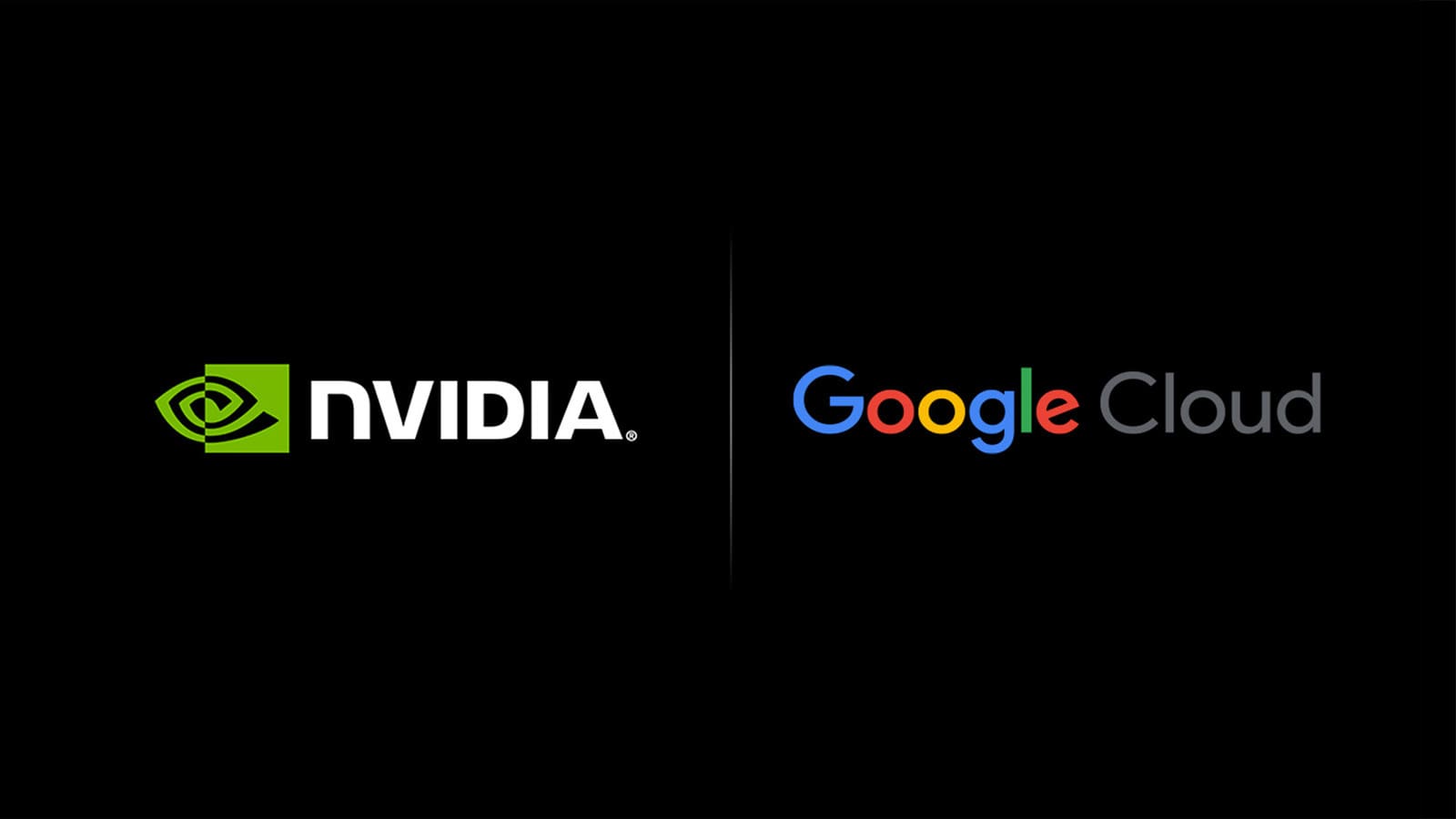In a move that promises to significantly boost the development and adoption of generative artificial intelligence (AI), Google Cloud and NVIDIA announced today a deepening of their partnership. The aim is to provide the machine learning (ML) community with technology that accelerates their efforts to easily build, scale, and manage generative AI applications.
As part of this expanded agreement, Google announced that it will adopt the new NVIDIA Grace Blackwell AI computing platform, as well as the NVIDIA DGX Cloud service on Google Cloud. Additionally, the DGX™ Cloud platform with NVIDIA H100 technology is now generally available on Google Cloud.
Building on their recent collaboration to optimize the Gemma open model family, Google will also adopt NVIDIA NIM inference microservices to provide developers with an open and flexible platform for training and deploying using their preferred tools and frameworks. The companies also announced support for JAX on NVIDIA GPUs and Vertex AI instances with NVIDIA H100 and L4 Tensor Core technology.
“The strength of our longstanding partnership with NVIDIA starts at the hardware level and extends throughout our portfolio, from cutting-edge GPU accelerators to software ecosystem and our managed Vertex AI platform,” said Google Cloud CEO Thomas Kurian. “Together with NVIDIA, our team is committed to providing a highly accessible, open, and comprehensive AI platform for ML developers.”
On his part, NVIDIA founder and CEO Jensen Huang noted, “Companies are looking for solutions that enable them to leverage generative AI to its fullest potential in weeks and months rather than years. With expanded infrastructure offerings and new integrations with the full stack of NVIDIA AI, Google Cloud continues to provide customers with an open and flexible platform to easily scale generative AI applications.”
The new integrations between NVIDIA and Google Cloud build on the companies’ long-standing commitment to providing the AI community with leading capabilities at every layer of the AI stack. Key components of the partnership expansion include:
- Adoption of NVIDIA Grace Blackwell: The new Grace Blackwell platform enables organizations to build and run real-time inference on large trillion-parameter language models. Google is adopting the platform for various internal deployments and will be one of the first cloud providers to offer Blackwell technology instances.
- DGX Cloud with Grace Blackwell technology coming to Google Cloud: Google will bring NVIDIA GB200 NVL72 systems, which combine 72 Blackwell GPUs and 36 interlinked Grace CPUs with fifth-generation NVLink®, to its highly scalable and high-performance cloud infrastructure. Designed for energy-efficient training and inference in a trillion-parameter LLM era, NVIDIA GB200 NVL72 systems will be available through DGX Cloud, an AI platform that provides a serverless experience for enterprise developers building and serving LLMs. DGX Cloud is now generally available on Google Cloud A3 VM instances with NVIDIA H100 Tensor Core GPUs.
- Support for JAX on GPUs: Google Cloud and NVIDIA collaborated to bring the advantages of JAX to NVIDIA GPUs, expanding access to large-scale LLM training among the broader ML community. JAX is a high-performance, compiler-oriented machine learning framework that is Python-native, making it one of the easiest-to-use and highest-performing frameworks for LLM training. AI professionals can now use JAX with NVIDIA H100 GPUs on Google Cloud through MaxText and Accelerated Processing Kit (XPK).
- NVIDIA NIM on Google Kubernetes Engine (GKE): The NVIDIA NIM inference microservices, part of the NVIDIA AI Enterprise software platform, will be integrated into GKE. Based on inference engines that include TensorRT-LLM™, NIM helps accelerate the deployment of generative AI in enterprises, supports a wide range of leading AI models, and ensures seamless and scalable AI inference.
- Support for NVIDIA NeMo: Google Cloud has streamlined the deployment of the NVIDIA NeMo™ framework on its platform through Google Kubernetes Engine (GKE) and Google Cloud HPC Toolkit. This allows developers to automate and scale generative AI model training and serving, and enables them to quickly deploy turnkey environments through customizable blueprints that kickstart the development process. NVIDIA NeMo, part of NVIDIA AI Enterprise, is also available on Google Marketplace, providing customers with another way to easily access NeMo and other frameworks to accelerate AI development.
- Vertex AI and Dataflow extend support for NVIDIA GPUs: To advance data science and analytics, Vertex AI now supports Google Cloud A3 VMs with NVIDIA H100 GPUs and G2 VMs with NVIDIA L4 Tensor Core GPUs. This provides MLOps teams with scalable infrastructure and tools to confidently manage and deploy AI applications. Dataflow has also expanded support for accelerated data processing on NVIDIA GPUs.
Google Cloud has long offered GPU VM instances with cutting-edge NVIDIA hardware technology alongside leading Google innovations. NVIDIA GPUs are a core component of the Google Cloud AI Hypercomputer, a supercomputing architecture that unifies performance-optimized hardware, open software, and flexible consumption models. The holistic partnership enables researchers, scientists, and AI developers to train, fine-tune, and serve the largest and most sophisticated AI models, now with even more of their favorite tools and frameworks jointly optimized and available on Google Cloud.
Clients such as Runway, Palo Alto Networks, and Writer are already reaping the benefits of this expanded partnership to enhance their AI platforms and workflows. With significantly improved performance, reduced costs, and the ability to scale to thousands of GPUs in a single framework, companies can deliver highest quality models that outperform those of larger teams and bigger budgets.
In conclusion, the expansion of the partnership between Google Cloud and NVIDIA marks a significant milestone in advancing generative AI. By providing developers with an open and flexible platform with the latest hardware and software innovations, the companies are paving the way for broader adoption of transformative AI applications in enterprises.

